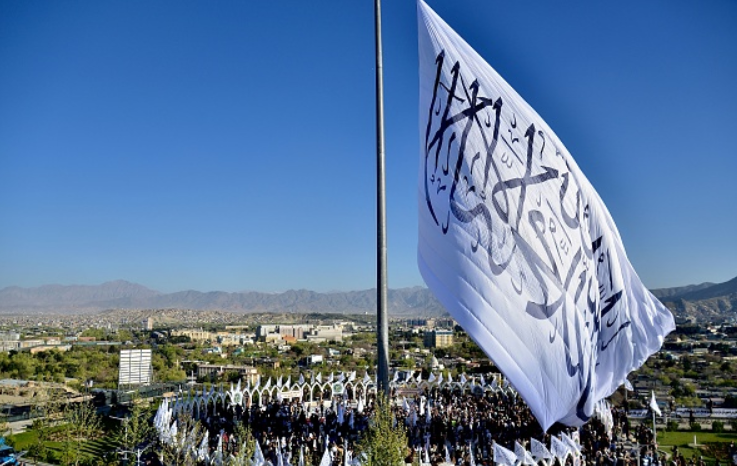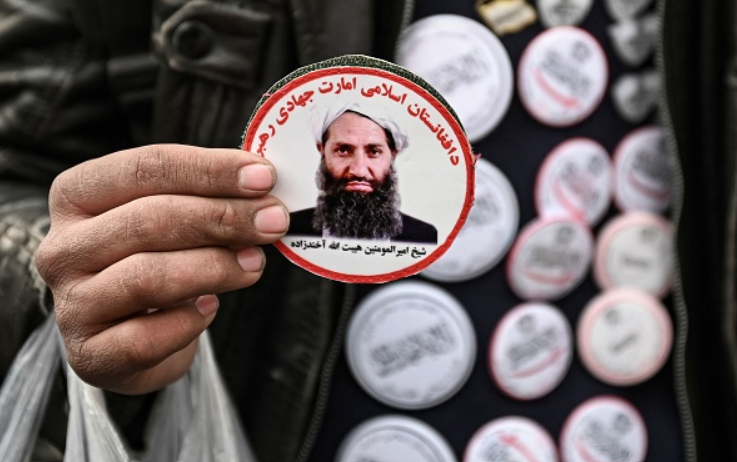
Recent reports signal deepening divides within Taliban leadership. While tensions first began over the political dispensation of their first cabinet, rumors of infighting over appointments and the number of seats remained just that without any visible or public divides observed. However, more recent statements made by senior Taliban leaders appear to make public rifts in the group’s cohesion. The Taliban’s ability to keep a lid on all internal differences has been a major point of strength for the group. In their twenty years of insurgency, the Taliban has avoided public displays of disagreements to prevent the United States and its allies from finding areas to exploit them.
Indications of Internal Divisions
Last month the Taliban’s Minister of Interior Sirajuddin Haqqani delivered a speech that has widely been read as a critique of the group’s leader, Hibatullah Akhundzada. In the speech, Haqqani condemned the monopolization of power, calling it intolerable. This represents a major breakaway from the modus operandi of keeping internal differences away from the public spotlight. Only days later, Minister of Defense for the Taliban Mullah Yaqoob encouraged the latest batch of military academy graduates to not obey anyone blindly, lending credence to suspicions of Taliban infighting.
If there are factions within the Taliban calling for a more pragmatic approach, their calls remain meaningless unless coupled with action.
The recent statements cast new light on past criticisms. In September, the Taliban’s Deputy Minister of Foreign Affairs Abbas Stanikzai stated that there was no Islamic reason to ban girls from education. While the statement originally appeared contained in education, the hardening of tones and framing of issues beyond just girls’ education in recent speeches by Sirajuddin and Yaqoob indicate an impatience with the Emir and an emerging rift.
Explanations for the rise in public criticism vary. One stance argues that less conservative factions of the Taliban have spoken out against Hibatullah out of frustration with his ultra-conservative policy choices. Patience among these Taliban leaders may have run out following the rapid succession of decrees banning women and girls from university and work. Frustrated that Hibatullah reaffirmed the ban on girls’ high school education despite the cabinet members promising a reversal, more pragmatic leaders chose to speak out.
Others disagree with the notion of conservative versus ultra-conservative Taliban, arguing that some leaders are just better liars than others. Evidence for this position manifests most clearly in the limited reactions to wide-sweeping bans that Taliban groups claiming to stand for girls’ education issued. Instead of forcefully opposing the bans, these groups responded with mere statements. A third explanation cautions against reading too much into the recent speeches. The stance sees the “rift” as nothing but a figment of the imagination and an attempt to make sense out of the senseless Taliban rule.

According to international officials who had visited Afghanistan after the most recent spree of bans, more pragmatic Taliban leaders had softened their tone, appreciated the work of international organizations, and attempted to convey a sense of urgency to resolve the issue. Regardless of these impressions, high schools and universities resumed this year without their female students. If there are factions within the Taliban calling for a more pragmatic approach, their calls remain meaningless unless coupled with action.
Seeking Reform
Acting is not easy. Action by Taliban leaders in support of girls’ education is constrained by two major factors and it is helpful to acknowledge them to adjust expectations accordingly. First, the central tenet of the movement that kept such a fluid and flat insurgency together for twenty years has been their absolute obedience to their Emir. The office of the Emir has always been a symbolic process around which the movement has found its identity. It would be unwise and imprudent to expect the Taliban to attempt an ousting of the Emir. The undoing of this central tenant will be the undoing of the Taliban and the spiraling into a civil war among competing factions.
Second, the lack of cohesion among the different groups of dissenters on the education issue leads to each group presenting their case individually to the Emir and an inability to create enough pressure that would lead to a repeal of the recent bans. There is a stark difference in visions for Afghanistan among the Emir’s close circle and those who oppose these new policies with only the first group having cohesion among themselves. One can assess the extent of the Emir and his close circle’s conservativeness from the fact that Sirajuddin Haqqani, the man behind the most vicious suicide bombings in Afghanistan, appears moderate in contrast.
Keeping all the limitations in mind, the pro-education camp would have to find cohesion and demand the establishment of some level of constitutionalism for their dissent to translate into meaningful action. This would lead to limiting the Emir’s power and a division of it among his ministers. The current prerogative state in which all previous laws are suspended and the body of the Emir is the sole law-giver makes it impossible for any organ to function without the Emir having complete authority over it. The current maneuvers by the Emir to undermine his Minister of Interior, Minister of Defense, and Head of the General Directorate for Intelligence by vesting powers into their deputies would also cease when laws are codified and implemented in Afghanistan. This current legal vacuum is hurting the Taliban as well as the country as a whole.
If the Taliban wishes to attain internal legitimacy and international recognition, it would have to resolve any internal disputes without jeopardizing its regime stability.
Constitutionalism will lead to a true division of powers among the Emir and local authorities. It will also empower other bodies by dividing the task of legislation, executive, and judiciary among them instead of them being concentrated with the Emir. This would be an efficient way out of the current deadlock. The Emir would not lose face for having to undo his recent decrees and the dissenters would not have to overthrow him. If the Emir were assigned the role of the head of state where he is tasked with reigning and not governing, that would give enough room for the less conservative Taliban to bring change in policies.
It is unlikely that the Emir would accept such changes willingly unless he were internally and subtly strong-armed by dissenters. These changes in policies will subsequently bridge the fast-growing gap between the Taliban and the population as well as give the world reason to engage with the Taliban. Ultimately, if the Taliban wishes to attain internal legitimacy and international recognition, it would have to resolve any internal disputes without jeopardizing its regime stability.
***
Click here to read this article in Urdu.
Image 1: Ahmad Sahel Arman/AFP via Getty Images
Image 2: Mohd Rasfan/AFP via Getty Images


